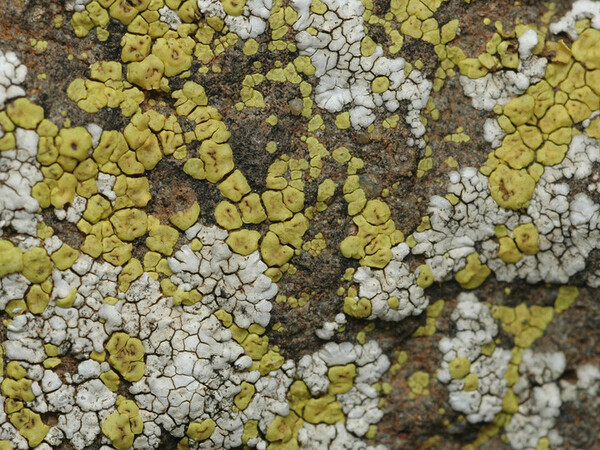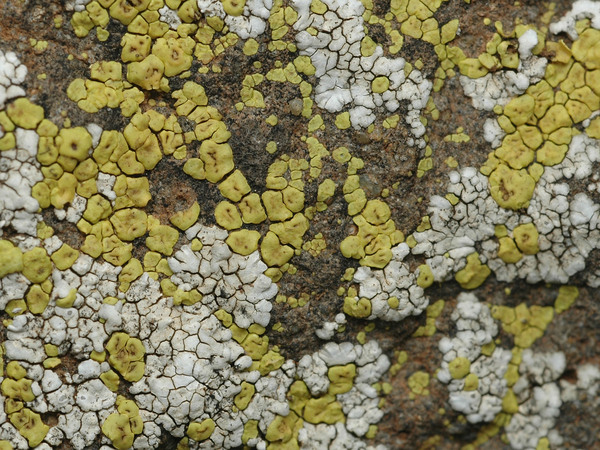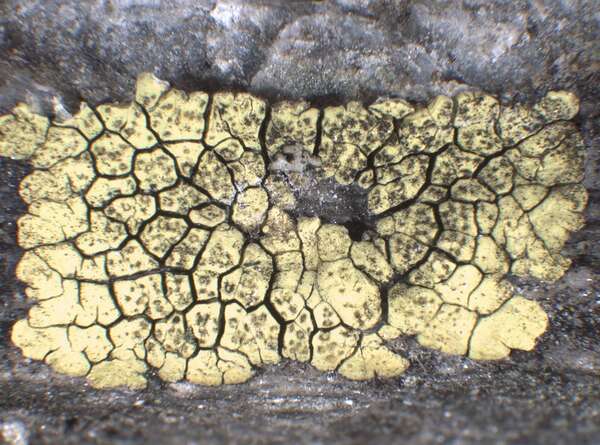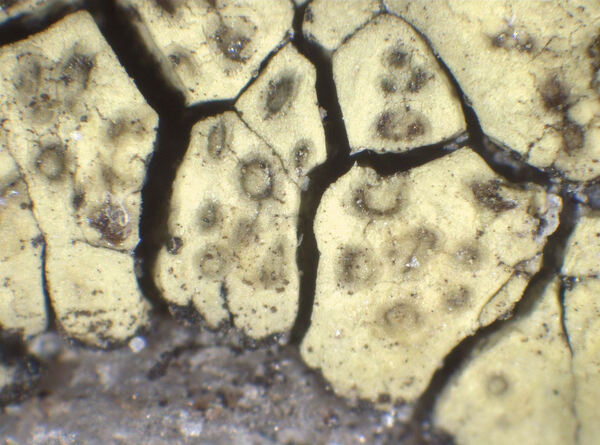Acarospora sulphurata (Arnold) Arnold var. sulphurata
Verh. zool.-bot. Ges. Wien, 36: 63, 1886. Basionym: Acarospora heufleriana v. sulphurata Arnold - Verh. zool.-bot. Ges. Wien, 22: 290, 1872.
Synonyms:
Distribution: N - TAA, Piem (Isocrono & al. 2003), VA (Piervittori & Isocrono 1999). S - Camp (Aprile & al. 2002), Cal (Puntillo 1996), Si (Grillo & Caniglia 2004).
Description: Thallus crustose, areolate-placodioid, bright yellow to (rarely) greenish yellow in shade-forms, matt, forming up to 4 cm wide rosettes. Lobes 0.5-1 mm wide and long, crenate, flat; central areoles irregular in shape, c. 1 mm wide, contiguous, flat to subconvex, separated by deep fissures. Cortex 35-50 µm thick, opaque, with more or less perpendicularly arraged hyphae; algal layer continuous; medulla white, 135-170 µm thick, with crystals dissolving in K. Apothecia lecanorine, up to 10 per areole, at first punctiform and immersed, then slightly expanded, 0.1-0.3 mm across, with a yellowish brown, round to irregular, plane to slightly concave disc and a thin, often indistinct margin. Proper exciple indistinct or to 15 µm wide; epithecium yellowish green to yellowish brown; hymenium colourless, 100-120 µm high; paraphyses 2-2.5 µm thick, the apical cells hardly swollen. Asci >100-spored, clavate, the apical dome conspicuous, K/I-. Ascospores 1-celled, hyaline, globose to subglobose, 2-4(-5.5) x 2-3(-4) µm. Photobiont chlorococcoid. Spot tests: cortex and medulla K-, C-, KC-, P-, UV+ orange. Chemistry: rhizocarpic acid.Note: a species of dry-continental areas found on basic siliceous rocks, often on steeply inclined to rain-sheltered surfaces near the ground, in dry grasslands, both in dry Mediterranean areas and in continental Alpine valleys below the subalpine belt.
Growth form: Crustose placodiomorph
Substrata: rocks
Photobiont: green algae other than Trentepohlia
Reproductive strategy: mainly sexual
Subcontinental: restricted to areas with a dry-subcontinental climate (e.g. dry Alpine valleys, parts of Mediterranean Italy)
Commonnes-rarity: (info)
Alpine belt: absent
Subalpine belt: absent
Oromediterranean belt: absent
Montane belt: very rare
Submediterranean belt: very rare
Padanian area: absent
Humid submediterranean belt: extremely rare
Humid mediterranean belt: extremely rare
Dry mediterranean belt: very rare

Predictive model
Herbarium samples
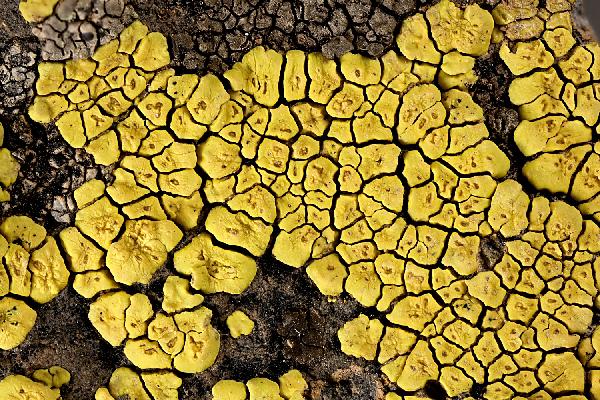
Ulrich Kirschbaum CC BY-SA 4.0 - Source: https://www.thm.de/lse/ulrich-kirschbaum/flechtenbilder
On volcanic rocks.Spain; Canary Islands: La Gomera (Tequerguenche). First finding for the Canary Islands.
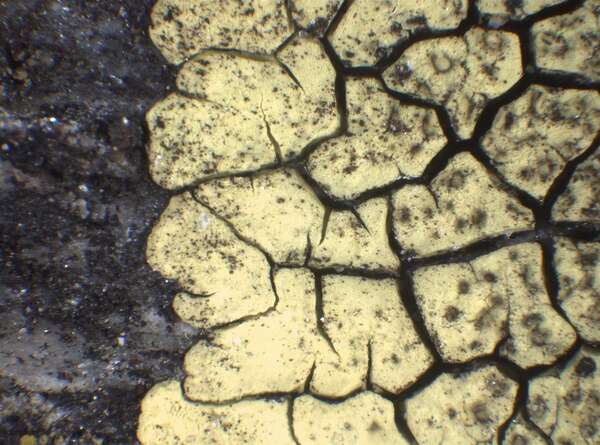

P.L. Nimis; Owner: Department of Life Sciences, University of Trieste
Herbarium: TSB (35423)
2002/12/02
Growth form: Crustose placodiomorph
Substrata: rocks
Photobiont: green algae other than Trentepohlia
Reproductive strategy: mainly sexual
Subcontinental: restricted to areas with a dry-subcontinental climate (e.g. dry Alpine valleys, parts of Mediterranean Italy)
Commonnes-rarity: (info)
Alpine belt: absent
Subalpine belt: absent
Oromediterranean belt: absent
Montane belt: very rare
Submediterranean belt: very rare
Padanian area: absent
Humid submediterranean belt: extremely rare
Humid mediterranean belt: extremely rare
Dry mediterranean belt: very rare

Predictive model
| Herbarium samples |

Ulrich Kirschbaum CC BY-SA 4.0 - Source: https://www.thm.de/lse/ulrich-kirschbaum/flechtenbilder
On volcanic rocks.Spain; Canary Islands: La Gomera (Tequerguenche). First finding for the Canary Islands.


 Index Fungorum
Index Fungorum
 GBIF
GBIF
